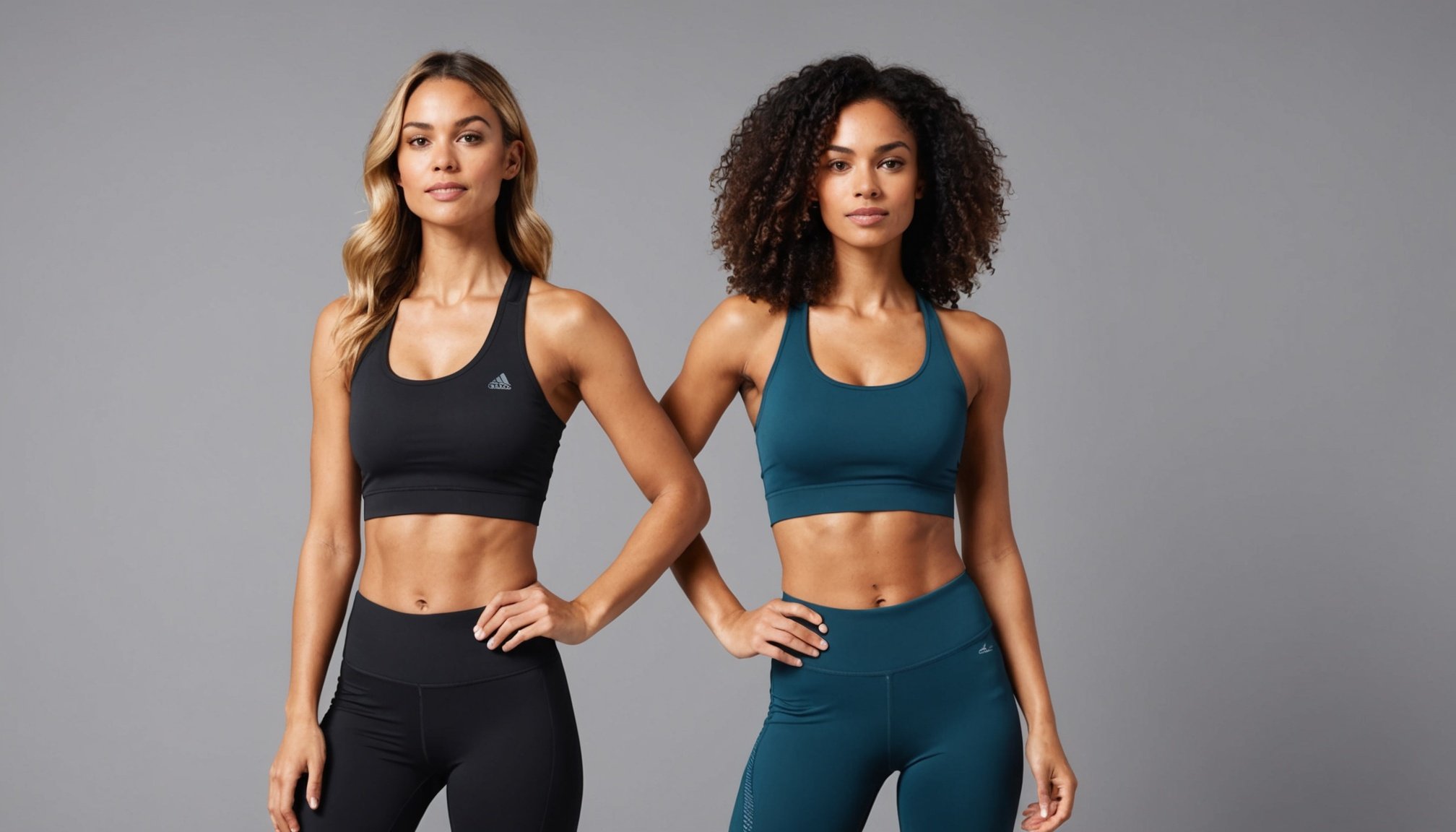Overview of Eco-Friendly Activewear Fabrics
Eco-friendly activewear is crafted from sustainable fabrics that minimise environmental impact. By incorporating renewable or recycled materials into fitness clothing, these options offer significant environmental benefits. This movement is not only a trend among UK consumers but a necessary shift towards responsible consumption.
The importance of choosing eco-friendly activewear lies in reducing the fashion industry’s carbon footprint. Sustainable fabrics like bamboo and organic cotton use fewer resources and result in a smaller ecological impact. With the fitness industry rapidly growing, this shift represents a conscious effort to align healthy living with planet-friendly decisions.
Have you seen this : Unveil the Top Sustainable Yoga Mats in the UK: Eco-Conscious Choices for Your Practice
Moreover, sustainable fitness clothing provides multiple functional benefits. These include moisture-wicking and breathable properties, ensuring comfort during workouts. They’re also frequently durable, standing up well to the rigours of high-intensity exercises. For those enthusiastic about fitness, selecting activewear that aligns with eco-conscious values enhances personal responsibility toward environmental stewardship.
UK consumers are increasingly valuing sustainability in their purchasing decisions. As a result, they are more inclined to support brands that prioritise the use of earth-friendly materials. Investing in eco-friendly activewear is not only a choice for better performance but also a commitment to a healthier planet.
Also read : Chic and Comfortable Jumpsuit Styles for a Chill Day in Brighton
Types of Eco-Friendly Fabrics
Exploring different types of fabrics used in eco-friendly activewear reveals not only their sustainable origins but also their unique characteristics for optimal fitness performance.
Organic Cotton
Organic cotton is a standout sustainable material known for its softness and breathability. Grown without harmful pesticides, it reduces soil contamination and water use. In activewear, it excels as a gentle, skin-friendly option, providing comfort while absorbing moisture effectively. Its natural fibres ensure that the clothing remains light, absorbing sweat while allowing your skin to breathe.
Recycled Polyester
Recycled polyester transforms plastic waste into a durable, high-performance fabric. By reprocessing discarded plastic bottles, this material significantly lowers the environmental impact compared to virgin polyester. Its strength and flexibility are ideal for clothing that withstands intense workouts. Additionally, it retains its shape and dries quickly, ensuring you stay comfortable throughout your exercise routine.
Tencel (Lyocell)
Derived from sustainably sourced wood pulp, Tencel (Lyocell) fabric offers a smooth and breathable experience. It is known for its moisture-wicking abilities and silky texture, which enhances comfort during fitness activities. Tencel is produced via eco-friendly processes, making it a top choice for consumers mindful of their environmental footprint.
Benefits of Eco-Friendly Fabrics for Fitness
Eco-friendly activewear offers substantial benefits, especially in the domain of fitness. One primary reason is the superior breathability of these sustainable fabrics. Materials like organic cotton effectively manage moisture through their natural fibres, providing a cooling effect during intense workouts. This ensures that athletes remain dry and comfortable.
Durability is another core advantage of these performance fabrics. Many sustainable options, such as recycled polyester, are crafted to withstand rigorous activities. They are designed to endure multiple washes and high-intensity usage without compromising their structural integrity. This translates to a better investment for the consumer, as these products maintain their appearance and functionality over time.
Comfort is paramount, particularly during exercise. These activewear pieces often feature skin-friendly compositions that reduce irritation and friction. Tencel (Lyocell), for instance, is known for its smooth texture and moisture-wicking properties, enhancing the user experience by effectively preventing chafing.
Ultimately, choosing eco-friendly activewear enhances overall fitness performance whilst aligning with values of environmental consciousness. Embracing these materials forms a crucial part of a sustainable lifestyle, benefiting both the individual and the wider planet.
Caring for Eco-Friendly Activewear
Proper care is essential for maintaining the quality of eco-friendly activewear. Following correct fabric care methods not only helps these sustainable fabrics last longer but also keeps their functionality intact. When it comes to general care instructions, always check the label on your fitness clothing for specific guidance to prevent damage during laundering.
Eco-Friendly Washing Tips
To minimise the environmental impact, opt for cold water washes. This conserves energy while protecting the integrity of sustainable materials. Use mild, eco-friendly detergents free from harsh chemicals to maintain the fabric’s properties and softness. Avoid fabric softeners, as they can obstruct the moisture-wicking abilities of fabrics.
Storing Your Activewear
Proper storage is equally crucial. Ensure that your activewear is completely dry before storing to prevent dampness and odours. Fold clothes neatly or hang them to retain shape and elasticity. For long-term fabric longevity, avoid exposing these garments to direct sunlight when drying. In doing so, sustainable fabrics retain their colours and performance features, offering optimal value over time.
Brand Recommendations
For individuals seeking eco-friendly activewear, several reputable brands offer compelling options featuring sustainable fabrics. These brands not only focus on functionality but also adhere to environmental ethics, making them a top choice for eco-conscious consumers.
Notable Brands
- Patagonia: Widely acclaimed for their sustainable materials and eco-conscious manufacturing processes. Consumers praise their commitment to environmental sustainability and diverse activewear selection.
- Girlfriend Collective: Renowned for using recycled water bottles in their apparel, highlighting the possibilities of recycled polyester. Customer feedback often notes the blend of style and sustainability.
- BAM (Bamboo Clothing): Specialises in bamboo fabrics, offering soft and breathable clothing suited for fitness. Customers appreciate their dedication to sustainable practices and high-performance clothing.
These companies are leading examples in the drive for more sustainable and responsible consumer habits in the UK. Opting for these brands represents a commitment to supporting businesses that prioritise environmental health, ensuring that fitness clothing choices have a positive impact. Whether you’re an eco-conscious shopper or fitness enthusiast, these brand recommendations can guide you toward dependable and environmentally-friendly activewear options.
Expert Insights and Influencer Opinions
Unveiling insights from fitness experts and influencers provides valuable perspectives on eco-friendly activewear choices. Many experts voice how eco-friendly activewear enhances performance due to its breathability and moisture management. According to trainers, these sustainable materials not only support physical comfort but also underscore vital ecological responsibility. This trust in quality without compromising environmental ethics resonates well among enthusiasts.
Influencers play a significant role in advocating for eco-conscious living. Their reviews often highlight personal experiences with sustainable brands, creating a direct connection with audiences who value ethical consumption. For instance, influencer discussions stress the importance of aligning fitness gear with broader sustainability goals, underscoring the impact of personal choices on global environmental concerns.
Another important facet involves communities promoting sustainable practices in fitness spaces. Communities encourage adopting brands known for low-impact production and engage in sharing tips about eco-friendly fitness solutions. Collectively, these voices amplify a message of sustainability that inspires action among followers.
The integration of expert and influencer opinions forms a crucial part of fostering a sustainable lifestyle. Their advocacy helps broaden understanding of why and how fitness intersects with ecological priorities.
Conclusion and Next Steps
Adopting a sustainable lifestyle in fitness is both impactful and rewarding. Transitioning to eco-friendly practices not only supports the environment but also enhances personal well-being. Engaging with brands that share a commitment to eco-conscious production is crucial. Consumers can explore brands offering eco-friendly activewear, which prioritises sustainable materials without compromising on style or performance.
To further support this transition, consider participating in communities that advocate for eco-friendly choices. These communities provide valuable insights as they share best practices and personal experiences, guiding others in making informed decisions. Additionally, keeping up to date with emerging trends in eco-friendly activewear can be facilitated through newsletters and platforms focused on sustainable fashion.
Exploring resources such as blogs, expert discussions, and influencer opinions can expand one’s understanding of how fitness and environmental consciousness intersect. Finally, making simple changes like opting for sustainable fabrics in fitness clothing and supporting sustainable brands creates a ripple effect on both personal health and the planet’s well-being. Small, informed steps collectively contribute to a larger movement towards responsible consumption and a healthier world.







